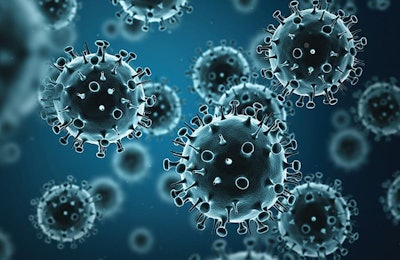
While the primary measures to deal with highly pathogenic avian influenza have been biosecurity to prevent introduction, early and accurate diagnosis, adequate notification and “stamping-out” of poultry on affected farms, vaccination remains an essential tool for the control of avian influenza in some countries.
Under optimal conditions, vaccination can increase poultry’s resistance to infection, prevent illness and death, reduce virus replication and shedding, and reduce virus transmission to birds and mammals, including humans, however, there remain limitations to vaccines and any vaccination strategy must be comprise technically sound and effective elements and always be properly executed.
With this in mind, the International Egg Commission’s Avian Influenza Global Export Group has published a paper detailing the essential components of an avian influenza vaccination program for the prevention and emergency management of the disease and to help maintain food security in endemically infected areas.
For any vaccination program to be successful, it must contain the correct elements and be properly applied:
- A national or regional emergency vaccine bank.
- Manufacture and use of only high-quality (high-potency) vaccines to produce a robust immune response; the vaccine must be capable of preventing infection, prevent shedding upon infection or sufficiently reduce transmission between birds.
- The quality of the vaccine, as mentioned above, must have been (laboratory) tested in birds vaccinated under field conditions.
- Antigenically relevant vaccine seed strains should be used that closely match the field virus (based on antigenic cartography). This should be under continuous review against a changing field virus.
- Vaccination should be applied in a targeted or sector- specific program and not in nationwide ring vaccination.
- Vaccines should be administered appropriately.
- Give individual birds an adequate number of vaccinations over their lifetime, usually a minimum of two vaccinations, possibly more in long-lived layers and breeders.
- In the case of inactivated vaccines, at least 80% of the flock should have a protective hemagglutination inhibition antibody titer. This should be checked regularly and booster inactivated vaccination given if less than 80% of the chickens do not meet the minimum titer; effective vaccination coverage (>80%) by recombinant vector vaccines should also be checked (method yet to be developed).
- Survey the vaccinated populations to find infected birds by virological and/or serological tests in a comprehensive Differentiating Infected from Vaccinated Animals (DIVA) strategy.
- Have a good biosecurity program in place to reduce HPAI virus exposure on the premises and prevent spread off-premises should infection occur.
- Continually review the program for its effectiveness, having set clear objectives from the onset.
- Have an exit strategy.
The working group states the success of any vaccination program will depend not only on technically sound and effective elements, but consistently proper execution. This implies everyone involved should act according to the plan in a consistent way.

Any vaccination program must be properly implemented using high-quality vaccines and is not a justification for reducing disease surveillance or levels of biosecurity. Andrea Gantz | Flickr.com
How biosecurity could prevent the next avian influenza outbreak
https://www.wattagnet.com/articles/39544


















